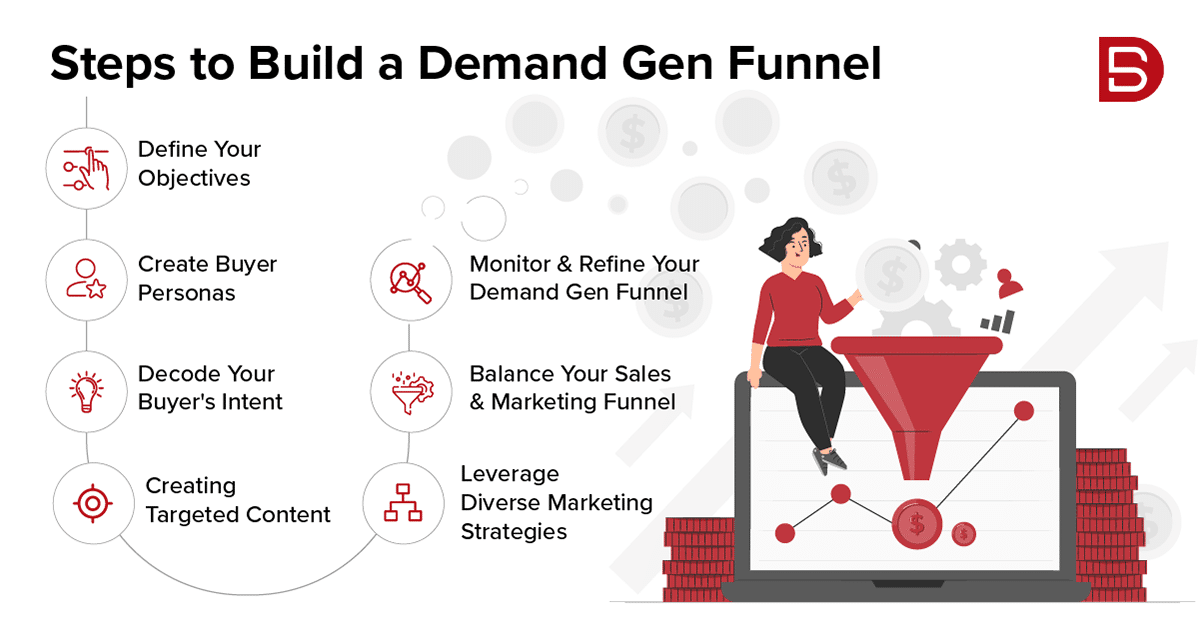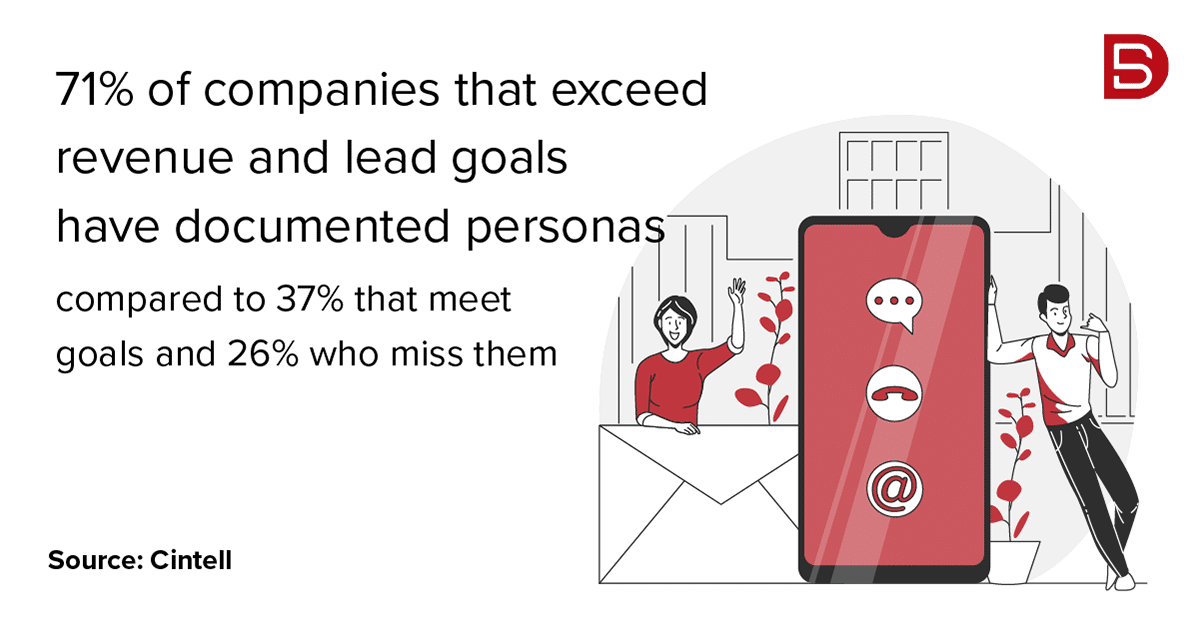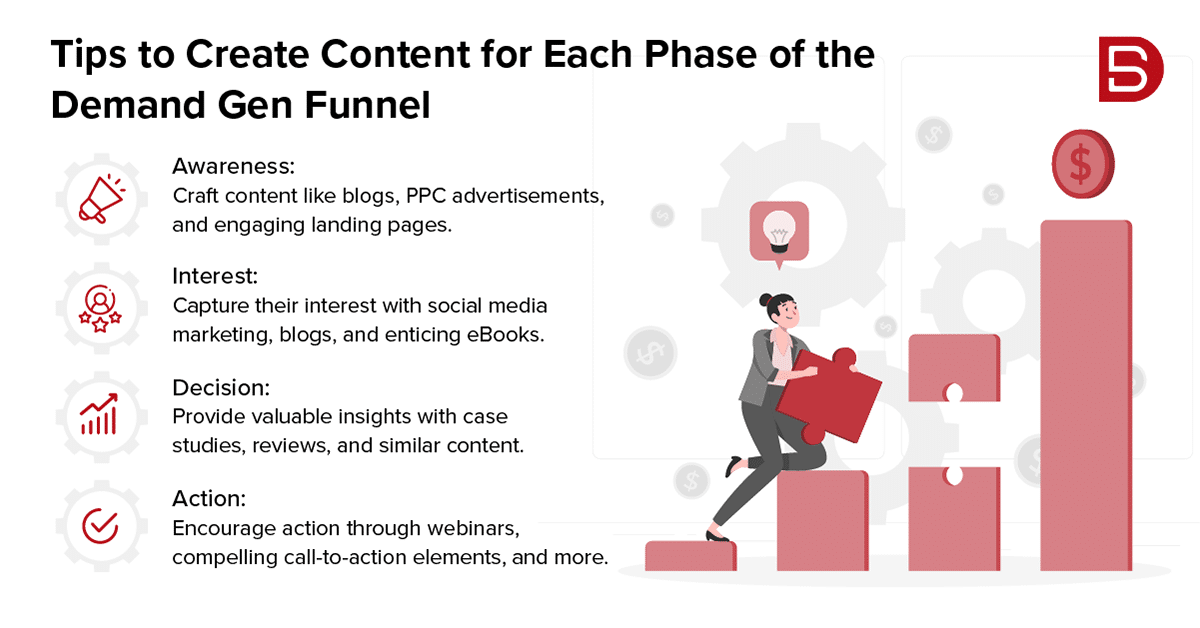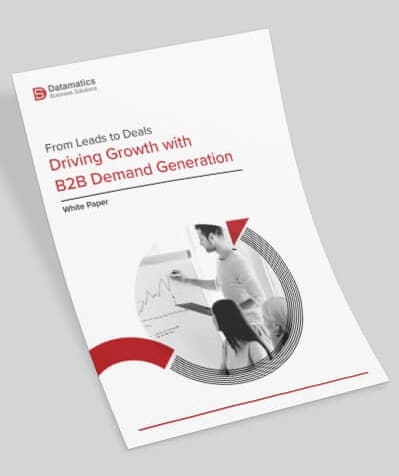A Gartner report states that 70% of B2B buyers conduct their own research before reaching out to the sales team. Furthermore, 77% of B2B buyers mentioned that their most recent purchase was complex, leading them to reevaluate their decision.
This goes to show that today’s buyers are more informed and certain about what they want. To increase brand visibility and educate customers effectively, businesses must shift their focus to the demand generation funnel. This funnel doesn’t follow the old “sell, sell, sell” approach. Instead, it’s all about providing real value to potential customers. This means that the methods and techniques for building this kind of funnel are about delivering value and keeping the customer at the center.
Let’s explore how you can construct a dynamic demand generation funnel that can contribute to your business growth.
Why Do You Need a Demand Generation Funnel?
The B2B sales cycle typically spans about 6 to 8 months, which provides ample opportunity for potential customers to slip away and land in a competitor’s lead funnel.
For businesses, the key lies in shrinking these customer sales cycles, a task that’s easier said than done, especially when dealing with B2B buyers known for their meticulous decision-making and thorough data analysis.
However, with a well-designed demand generation funnel, you can present your potential clients with the right information at precisely the right moment. This approach not only shortens their sales cycle but also streamlines the decision-making process, ultimately working in your favor.
Streamline Your Marketing Strategy
The world of digital marketing can be overwhelming, with a vast array of both free and paid strategies to choose from. In such a complex landscape, crafting a sales funnel can serve as your guiding light. It not only streamlines your marketing process but also enables you to concentrate on tactics that have the potential to fuel your company’s expansion.
What’s more, a well-designed sales funnel allows you to monitor and track your marketing campaign closely. This invaluable insight empowers you to maximize your return on investment (ROI) by optimizing your marketing spend.
Attain Your Goals
With a demand gen funnel, you can expedite the realization of your marketing objectives. This approach enables you to establish key performance indicators (KPIs) that ensure your marketing plans align closely with your end goals.
Additionally, these KPIs serve as valuable instruments for tracking the effectiveness of your marketing initiatives, promoting unity and alignment among your team and throughout your organization.
Identify the Marketing-Qualified Leads (MQLs)
Let’s face it, not all leads are ready for marketing attention. In truth, only a small portion of your potential leads can be considered MQLs.
Use a demand generation pipeline to pinpoint these MQLs within your funnel. Afterward, focus your efforts on converting them into SQLs (sales-qualified leads). This strategic move not only reduces your customer acquisition costs but also optimizes your spending by directing it towards leads that are already warming up, potentially boosting your profits.
Know Where Your Leads Stand
The four steps of a typical demand-creation process are awareness, interest, decision, and action. A lead that is present at each level has unique preferences and needs.
As a result, when you have a correct funnel, you can see where each lead is in the funnel. This will enable you to convert your leads more quickly by using the appropriate marketing resources. To take this a step further, consider collaborating with a demand generation services provider to craft a customized funnel. They bring expertise in aligning your strategies with the specific needs of your leads at each stage. This partnership enhances your ability to convert leads efficiently and effectively, ultimately driving growth and success.
Earn Customer Trust
Trust is the bedrock of nurturing strong relationships with your customers. A study shows that 90% of consumers are willing to shell out extra bucks for brands they trust.
Now, here’s where a well-crafted demand generation strategy comes into play. You see, not every customer is ready to make a purchase right away. Some are just window shopping, searching for dependable brands. But, with your trust-building techniques, you can establish a solid connection with potential customers and gradually persuade them to choose your product or services. It’s all about cultivating that trust factor!
Boost Your Conversion Rate
Today, attracting traffic and leads can be relatively straightforward, especially with the help of paid ads and social media automation.
But here’s the real question: Are your conversion rates hitting the mark?
Your conversion rate is the measure of how many leads turn into paying customers. You can keep a keen eye on your conversion rate with a well-thought-out strategy. This ensures that your conversion rate remains favorable, considering the resources you invest in your marketing endeavors. It will help you turn interested prospects into satisfied customers.
7 Crucial Steps to Build an Effective Demand Generation Funnel
Creating a demand generation funnel in marketing involves a diverse set of strategies tailored to your company’s goals. To effectively reach potential clients, aligning various marketing approaches is essential. It’s crucial to structure these demand generation campaigns into a well-defined funnel to establish a more robust connection with prospects. Here are the steps to construct a dynamic demand generation funnel:
Step 1. Define Your Objectives
Every marketing initiative begins by identifying your company’s goals. Without a clear grasp of your needs, you won’t find the ideal methods to achieve those objectives. Therefore, gather your marketing and sales teams to establish clear demand marketing goals. Once you have these objectives in place, you can start crafting your marketing strategies.
Let’s say you’re on a mission to boost your sales in the next month. Starting a whole new marketing campaign might not be the quickest path to success, given the time crunch. Instead, think about using the power of email marketing, especially with your current customers, and let’s get that sales funnel working for you.
By analyzing what they’ve purchased before, you can create personalized offers that resonate with them. To top it off, you can also suggest additional products or upgrades that align with their past buying patterns. This way, you’re on the fast track to boosting those sales!
Step 2: Create Buyer Personas
To successfully sell your services, you need to identify your target audience. If you’re not offering something entirely groundbreaking, your product likely already exists in the market. So, the key is to identify the characteristics and challenges of your potential customers.
The best way to get inside your customers’ heads is by crafting buyer personas. These are essentially fictional representations of your ideal customers. Understanding your real customers starts with creating these personas, and it’s a game-changer for your approach.
When building buyer personas, brands often consider broad factors like customer interests, income levels, and preferences. However, it’s essential to understand your products and services and define criteria accordingly to build your buyer persona and demand generation framework.
Step 3. Decode Your Buyer's Intent with Content
The key to understanding your customers better is your content. When figuring out what your customers are up to online, especially regarding content, intent data is like striking gold. Keep a close eye on how your potential customers interact with content online. This is your window into their thoughts and what they’re after.
Why is this so important? Well, nowadays, people like to do their own research. In fact, according to Gartner, only 17% of the time, B2B customers talk to a sales team when considering a purchase. Most of the time, they rely on their research. That’s where crafting various types of content on your website or other platforms comes in handy. It helps you gather the intent data you need to craft a smart brand awareness marketing strategy. .
Step 4: Creating Targeted Content for Each Demand Generation Phase
Now, let’s take a closer look at the pivotal role of content in your digital marketing strategy. Think of content marketing as the core and essence of your entire plan. Every other aspect, whether it’s your social media efforts or digital advertising, hinges on the quality and effectiveness of your content. It’s abundantly clear that investing in high-quality content is not a choice but a necessity when your goal is to stimulate demand for your products or services.
However, haphazardly churning out blog posts or random social media updates won’t suffice in today’s fiercely competitive landscape. To genuinely connect with your potential customers at every stage of the demand generation process, you must curate content tailored for each specific phase.
This will help you provide them with the information they require, precisely when they require it, thus steering them toward making well-considered purchase decisions. Here’s the roadmap for creating the right content at each demand generation stage:
Step 5: Align Your Content with Diverse Marketing Strategies
Demand generation marketing is like a puzzle, and content is just one piece of it when it comes to building brand demand. In addition to your content strategy, it’s vital to seamlessly integrate it with other effective B2B marketing trends that are making waves. Let’s consider webinars as an example.
Webinars have emerged as a powerful tool for engaging potential clients and gaining insights into their needs and challenges. Recent studies indicate that 95% of B2B marketers are now harnessing webinars, with an impressive 72% reporting increased revenue and a more robust sales funnel.
However, don’t confine your strategy solely to webinars; think about weaving in other marketing approaches like digital advertising and social media marketing. This well-rounded approach will elevate your demand generation efforts to a whole new level.
The Art of Demand Generation Decoded
Skyrocket Your Sales
Download the eBook
Step 6: Balance Your Sales & Marketing Funnel
Throughout this blog, we’ve emphasized a critical point: avoid the hard sell. Constant sales calls and relentless advertisements can be a turn-off for anyone.
After introducing individuals to your products or services, it’s essential to give them the space to process the information. Let them conduct their research and make an informed decision at their own pace.
This is why your demand generation funnel should balance marketing and sales efforts. Utilize a variety of components to inform, engage, and communicate with your customers effectively.
One powerful technique is lead scoring, where you assess leads based on how they interact with your marketing materials. This enables you to tailor your approach to each lead. For instance, you might employ a more direct approach for Sales Qualified Leads (SQLs) who are ready to buy while focusing on educating your softer leads who may convert in the future. It’s about delivering the right message to the right audience at the right time.
Step 7: Monitor and Refine Your Demand Generation Funnel
Once you’ve set up your demand generation funnel, it’s crucial not to rest on your laurels. In fact, you should continuously monitor the effectiveness of your specific marketing strategy and conversion rates. Such demand generation metrics allow you to make real-time adjustments if your demand funnel isn’t yielding the desired results. It’s more efficient to tweak things promptly to conserve your marketing resources.
Furthermore, investing in a marketing plan that performs exceptionally well can expand your business’s market reach. You can utilize various marketing tools and analytics to track and evaluate your demand generation funnel. This keeps you agile and responsive in optimizing your demand-generation efforts.
Ready to Customize Your Demand Generation Funnel?
Demand generation may sound like a simple concept, but it’s got its intricacies. Building the perfect demand generation funnel for high-quality leads depends on knowing your brand and audience.
So, never underestimate the importance of your demand generation funnel. Instead, when you’re crafting your demand generation strategy, get specific, get technical. Write to us at marketing@datamaticsbpm.com, and our demand generation experts will reach out to you as soon as possible. We can help you create a custom demand generation funnel that fits your company’s unique needs.
 Select an element to maximize. Press ESC to cancel.
Select an element to maximize. Press ESC to cancel.
Paul van de Kamp





